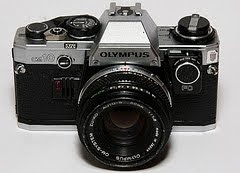
Thursday, 28 April 2011
Personal Trajectory Ctd. CV

Sunday, 27 March 2011
Barbican Art Gallery 24th March 2011

Saturday, 26 March 2011
Gordon Matta Clark - Profile and Work



Trisha Brown

Friday, 25 March 2011
Ecobuild 20th - 22nd March 2011 and Personal Trajectory
- Atlas Concorde: PLAN, outdoor design
- Frosts: VERTISCAPES
- Sempergreen: Vegetation Blankets for Roof and Ground Covering
- Sempergreen: Vertical Systems
- Safetytread: Slip-Resistant Treds, Stair Nosings and Inserts
- DeltaLight: The Lighting Bible 8




Friday, 4 March 2011
Unexpected Use of Space
Thursday, 3 March 2011
Unexpected Use of Space


Unexpected Use of Space
The Secret Home Made Skate Park... from Martyn Thomas on Vimeo.
These guys turned a disused exterior space and created a home made skatepark.
Unexpected Use of Space
Unexpected Use of Space
Cliché Javier Mendizabal commercial by French Fred from Cliché Skateboards on Vimeo.
working with common architectural artefacts that we often see in the urban landscape.
Unexpected Use of Space



Wednesday, 2 March 2011
Friday, 25 February 2011
Sunday, 20 February 2011
Stockholm Trip, 15th February 2011
View Sweden in a larger map
DAY 1 - On Tuesday early morning (15th February 2011), I, Gar, Enrico, Aaron and Joe set off to

Stockholm Trip, 16th February 2011
The following day was extremely tiring due to the amount of mileage that our wee legs clocked up along the frozen waterfront that divides the
I remember thinking to myself that this place was quite literally a winter wonderland, sometimes I was reminded of the somewhat similar atmosphere that was experienced in Whistler, Canada during my travels a couple of years back. Because of the tremendous difference between Stockholm and London based on these conditions it was impossible to compare the two, though it was interesting to see how much of the snow was left in its natural state after snowfall rather than being gritted or ploughed to make way for pedestrians and vehicular use, from this action alone you could immediately tell that the people of Stockholm are far more complacent than that of London’s population if similar conditions were to take place. Streets were incredibly quiet and it was rare to hear a loud conversation or shouting between people, instead you could also tell that much more respect is given between its population. I managed to take a couple of pictures that best conveys my experience walking along the waterfront (below).







